Grand Rapids Academic Summer Program
Grand Rapids Academic Summer Program (GRASP) is a summer math and reading correspondence program that helps scholars in grades kindergarten through 8th retain skills learned during the school year by providing review exercises.
GRASP Curriculum
Teachers and curriculum professionals developed GRASP as a cost efficient substitute for traditional summer school. Lessons were written to correlate with the Common Core Standards which most states have adopted.
GRASP offers 9 lessons to be submitted during the summer - one per week or at a scholar's own pace as long as they are submitted before the final due date. Each lesson reinforces the basic skills typically found in most curricula at that particular grade level. GRASP staff score the lesson and return it to the scholar with comments.
Packets are available for scholars finishing grades K-8 to review their math and reading skills. Scholars finishing grades 4-8 can select online resources instead of the packets.
We recognize our scholars' efforts by awarding a certificate to those who successfully complete at least seven lessons with 70% accuracy. A medal is given to scholars who successfully complete all nine lessons from their packet.
Objectives Grades K-2
Kindergarten Math Objectives
- Recognize numbers 1 – 12 when written as words
- Addition of 2 and 3 one-digit numbers, addition of two-digit numbers and one-digit numbers
- Subtraction of 2 one-digit numbers, and two-digit minus one-digit numbers
- Skip counting by 2’s, 5’s, and 10’s
- Complete the pattern
- Fractions - recognizing 1/4, 1/3, 1/2
- Money – find the value of coins, counting money, order and compare
- Choose the correct operation
- Number sentences – solving for addition and subtraction
- Counting the number of objects up to 20
- Tell time to the nearest hour
- Measurement – use a ruler to measure to the nearest inch
- Geometry – recognize shapes such as a square, triangle, or circle
- Read a calendar
- Use a number line to solve problems
- Solve number sentences
- Compare and order numbers such as before, after, between, middle, smallest, largest, next, more, less, first, third, last, most, least
- Bar and circle graphs
- Problem solving
- Estimate time needed to complete situation
- Compare size of objects such as heaviest, shortest, longest
- Geometry – identify correct measurement tool
- Recognize days of the week and correct order of days
- Write the numbers up to 110
- Identify a dozen
- Place value blocks
- Count backward
- Identify seasons
Kindergarten Reading Objectives
- Recognize lower case and capital letters
- Write a letter that comes before and after another letter
- Read a short story and decide what the main idea is
- Trace letters, lines, circles
- Write the alphabet
- Match words that have the same beginning sound
- Match words that rhyme
- Classification – group pictures into categories
- Draw a picture of something that begins with a certain letter
- Identify letters of the alphabet, matching upper and lower case letters
- Read a simple sentence
- Recognize beginning and ending letters and sounds
- Identify beginning letter of each picture
- Recognize matching words
- Recognize difference between real and make believe sentences
- Listening skills – parent reads directions and child follow directions
- Put three words in correct order to make a sentence
- Select picture that begins with a certain letter
- Recognize written word that matches the picture
- Sequence three story pictures
First Grade Math Objectives
- Adding 2, 3 and 4 one-digit numbers, adding two-digit numbers plus one-digit numbers
- Subtracting two-digit numbers minus one-digit numbers and two-digit numbers minus two-digit numbers
- Skip counting by 2’s, 5’s, and 10’s
- Counting the number of objects up to 100
- Money – find the value of coins, adding the value of coins
- Read a calendar
- Fractions – recognize 1/4, 1/3, 1/2
- Geometry – recognize a square, triangle, rectangle, oval
- Tell time to nearest hour and half-hour, add or subtract time, estimate time needed to complete situation
- Complete the pattern
- Count backwards
- Bar graph
- Place value blocks
- Identify fact families
- Identify unnecessary information in story problem
- Use of < > =
- Compare and order numbers
- Geometry – use a ruler to measure to the nearest inch
- Recognize correct number sentence for addition and subtraction
- Find missing number in number sequence
- Compare size of objects – shortest, heaviest, fullest
- Recognize numbers when written such as 6 tens 5 ones = 65
- Story problems
- Compare weight of objects
- Identify even and odd numbers
First Grade Reading Objectives
- Comprehension – read a short story and answer questions
- Choose the correct verb in a sentence
- Choose the correct noun in a sentence
- Identify main idea
- Listen to and follow 3 step directions
- Choose correctly spelled word
- Identify beginning and ending consonant diagraphs
- Choose correct homophone
- Compound words
- ABC order
- Identify beginning consonant blends
- Identify author and illustrator of book
- Contractions – choose the two words that make up a contraction
- Capitalization – choose correctly capitalized sentence
- Identify as fiction or non-fiction
- Choose correct ending punctuation for sentences
- Identify words with the same beginning sounds
- Choose correct word to use in sentence
- Identify naming words and action words
- Synonyms and antonyms
- Choose proper place to begin reading a story
- Sentence comprehension – putting parts of sentences together
- Identify words that belong to the same word family as the picture
- Classification – identify correct grouping of words
- Choose proper place to find information
- Spelling
- Select complete and incomplete sentences
- Identify words that have the same vowel sound
Second Grade Math Objectives
- Adding 3 one-digit numbers and 2 two-digit numbers with and without regrouping
- Subtracting two-digit numbers minus one-digit numbers with regrouping and subtracting three-digit numbers minus two-digit and three digit numbers with and without regrouping or borrowing
- Multiplication – meaning of
- Division – meaning of
- Ordering numbers
- Skip counting by 2’s, 5’s 10’s, 100’s
- Recognizing numbers up to 1000
- Identify odd and even numbers
- Temperature – read a thermometer
- Time – telling time, adding and subtracting time to the nearest hour, half-hour, and quarter hour
- Meaning of < > =
- Story problems
- Fact families
- Graphs – bar and pictograph
- Measurement – use of a ruler to measure to nearest inch
- Measurement – inch, foot, yard, ounces, pound, cup, gallon, quart, gram, kilogram
- Money – value of coins, adding and subtracting value of coins and bills
- Identify correct number sentence for addition and subtraction
- Write and read numbers in standard notation
- Fractions – meaning of, subtracting and adding, identify shaded part
- Recognize ordinal numbers such as first (1st)
- Identify inverse operations
- Read place value blocks up to 1000
- Identify unnecessary information in story problem
- Write numbers in expanded notation
- Write a number problem to go with picture
Second Grade Reading Objectives
- Comprehension
- Spelling
- Capitalization
- Letter writing skills
- Addressing an envelope
- Using context clues
- Vocabulary skills – find meaning of words
- Identify words with same vowel sounds
- Main idea – read short story and identify main idea
- Choose whether story is reality or fantasy
- Identify the adjective, adverb, or verb in a sentence
- Choose the correct word to complete a sentence
- Vocabulary – choose a word with the same meaning
- Use context clues
- ABC order
- Synonyms and antonyms
- Choose best story beginning
- Sequencing – decide what is most likely to happen next
- Punctuation – identify punctuation errors and choose correct punctuation at end of sentences
- Poetry
- Reference sources – choose correct use of atlas, dictionary, encyclopedia
- Identify parts of a book
- Rhyming words
- Identify differences between fable and fairy tale
Objectives Grades 3-5
Third Grade Math Objectives
- Addition of two, three, and four-digit numbers plus two, three, and four-digit numbers
- Subtraction of two, three, and four-digit numbers minus two, three, and four-digits with or without regrouping
- Multiplication – meaning of, one-digit times one-digit
- Division – meaning of, one-digit divided by one-digit
- Money – find value of coins and bills, make change
- Meaning of < > =
- Ordering numbers
- Fractions – ordering, show shaded part of a whole or mixed number
- Time –tell time, find elapsed time to nearest hour, half-hour, quarter-hour, ten minutes, and five minutes
- Probability
- Temperature – read thermometer, determine temperature situations
- Geometry – perimeter, area, angle, right angle, line segment, pentagon, octagon, triangle, square, triangle intersect
- Number patterns
- Measurement – hour, minute, second, inch, feet, yard, ounce, pint, quart, gallon, pound, mile centimeter
- Estimate to nearest 10 or 100
- Skip counting by 2’s, 3’s, 5’s, 10’s, 50’s, 100’s, 500’s, 1000’s
- Properties
- Graphs – frequency table, bar graph
- Calendar – days, week
- Decimals – adding and subtracting decimals
- Solve 2 step problems
- Round numbers to nearest 10 and 100
- Identify denominator and numerator
- Use of arrays to identify facts
- Write and read numbers in standard notation
- Write a number problem to correlate with picture
- Read place value blocks up to 1000
- Find the missing number on a number line
- Problem solving using the order of operations
- Measurement – use of a ruler to measure to the nearest centimeter
Third Grade Reading Objectives
- Antonyms, synonyms, homonyms
- Vocabulary
- Spelling
- Editing
- Verbs and pronouns – proper use of
- Main idea and supporting details
- Plurals and possessives
- Parts of a letter
- Comprehension
- Contractions
- Reading for information
- Listening skills – adult reads story and child answers questions
- Cause and effect relationship
- Divide words into syllables
- Compound words
- Context words
- Prefixes and suffixes
- Using a table of contents
- Adjectives
- Correct verb and subject agreement
- Sequencing events in a story
- Use of word web
- Reality or fantasy
- Dictionary skills
- Punctuation and grammar
- Identify authors purpose: entertain, persuade, or inform
- Use of a Venn Diagram
- Using an index
- Punctuation
- Identify common and proper nouns
- Using an encyclopedia or newspaper to find information
- Reading strategies
- Words with multiple meanings
- ABC order
- Putting parts of sentences together
- Proper use of quotation marks
Fourth Grade Math Objectives
- Addition of two, three, and four-digit numbers plus two, three, and four-digit numbers
- Subtraction of two, three, and four-4 digit numbers minus two, three, and four-digit numbers with or without regrouping
- Multiplication of three-digit numbers times one and two digit numbers, four-digit numbers times 1 digit numbers
- Division of four-digit numbers divided by one-digit with and without remainders
- Decimals – add, subtract, order, place value
- Money – make change
- Arrays
- Properties
- Geometry – triangle, pentagon, hexagon, octagon, square, polygon, rectangle, congruent, equivalent, rotation, line of symmetry, vertices
- Number patterns
- Measurement – week, year, inch, feet, yard, ounce, pound, gallon, centimeter
- Estimate to the nearest 10, 100, 1000
- Temperature – read thermometer, determine temperature situations, identify freezing and boiling points
- Graphs – bar, pictograph, frequency table
- Measurement – perimeter, area, volume
- Probability
- Fractions – shade, add or subtract with like denominator, order, identify equivalent fractions
- Round to nearest 10, 100, 1000
- Measurement – use ruler to measure to nearest centimeter
- Time – tell time to the nearest minute, find elapsed time
- Identify decimals as place value blocks
- Fact families
- Find unknown variable in number sentences
- Write numbers in standard notation and expanded notation
- Identify odd and even numbers
- Geometry- recognize geometric shapes, congruent figures, similar figures, rotation and flips of figures
Fourth Grade Reading Objectives
- Comprehension
- Identify adjectives, adverbs, pronouns, nouns, verbs
- Reading skills
- Spelling
- Punctuation and grammar
- Main idea and supporting details
- Reading for information
- Common and proper nouns
- Use of guide words
- Synonyms, homophones, antonyms
- Dictionary skills
- ABC order
- Sequencing
- Identify parts of a letter and what kind of letter
- Adjectives that compare
- Identify complete and incomplete sentences
- Use of context clues
- Prefixes and suffixes
- Vocabulary
Fifth Grade Math Objectives
- Addition – up to and including six-digit numbers plus six-digit numbers
- Subtraction – up to and including six-digit numbers minus six-digit numbers
- Multiplication – up to and including four-digit numbers times three-digit numbers
- Division – up to and including six-digit numbers divided by three-digit numbers
- Fractions
- add with like denominators
- add with unlike denominators
- add mixed numbers
- subtract with like denominators
- subtract with unlike denominators
- subtract mixed numbers
- multiply fractions
- multiply mixed numbers
- divide fractions
- divide mixed numbers
- order fractions
- relate to decimals
- reduce fractions
- equivalent fractions
- Decimals
- place value
- equivalent decimals
- compare and order
- round
- relate decimals to fractions
- add decimals
- subtract decimals
- multiply by whole number
- divide by whole number
- Find value of unknown variable
- Order numbers
- Measurement – perimeter, area
- Geometry – right angle, perpendicular, parallel, intersect, line of symmetry, point, ray, equilateral
- Number patterns
- Money – adding totals
- Graphs – chart, bar, pie, line, pictograph
- Probability
- Multiples, factors, and factor trees
- Metrics – conversions, add and subtract story problems
- Use of < > =
- Writing numbers in standard form and expanded form
- Finding the average, median, mode, and range
- Measurement – inches, feet, yard, gallon, ounces, pounds, cups, quarts
- Composite and prime numbers
- Estimate
- Mental math
- Find elapsed time
- Number arrays
- Identify fractions and decimals on a number line
- Converting from one unit of measurement to another
Fifth Grade Reading Objectives
- Synonyms, antonyms, homophones
- Abbreviations
- Identify authors purpose: entertain, inform, persuade
- Identify difference between fact and opinion
- Identify adverbs, adjectives, conjunctions
- Identify different kinds of poetry: clerihew, haiku, limerick, cinquain
- Main idea and supporting details
- Figures of speech
- Outlining
- Predict what will happen next in a story
- Identify the problem in a story
- Identify and choose the correct verb tense
- Identify the correct source to locate information
- Common and proper nouns
- Plurals and possessives
- Editing
- Using context clues
- Making inferences
- Vocabulary
- Comprehension
- Punctuation
- Choose the best summary of a story
- Use of guide words
- Contractions
- Similes
Objectives Grade 6-8
Sixth Grade Math Objectives
- Addition – up to and including six-digit numbers plus six-digit numbers
- Subtraction – up to and including six-digit numbers minus six-digit numbers
- Multiplication – up to and including four-digit numbers times four-digit numbers
- Division – up to and including six-digit numbers divided by three-digit numbers
- Fractions
- add with like denominators
- add with unlike denominators
- add mixed numbers
- estimate sums
- subtract with like denominators
- subtract with unlike denominator
- subtract mixed numbers
- multiply fractions
- multiply mixed numbers
- divide fractions
- divide mixed numbers
- relate fractions and decimals
- relate fractions and percents
- equivalent fractions
- simplest forms
- least common denominator
- compare and order
- relate mixed numbers as improper fractions
- find fraction of a number
- identify diagram of a fraction or mixed number
- Decimals
- place value
- equivalent decimals
- compare and order
- relate decimals and fractions
- relate decimals, fractions, and percents
- add decimals
- subtract decimals
- multiply by whole number
- multiply by decimal
- divide by a whole number
- divide by decimal
- zeroes in quotient and dividend
- identify as shown in a diagram
- Percent
- meaning
- relate fractions and percents
- relate decimals and percents
- percent of a number
- percent one number is of another
- find number when percent of it is unknown
- percent applications of discount and sale price
- Graphs – line, pie, bar, charts
- Estimate the measure of an angle
- Composite and prime numbers
- Find greatest common factor
- Round to nearest ten, hundred, thousand
- Mental math
- Geometry – line of symmetry diameter, congruent
figures, measuring angles, kinds of angles (acute,
obtuse, right, straight), similar figures - Order of operations
- Number patterns
- Find average, range, median, mode
- Finding value of unknown angle of a triangle
- Perimeter
- Finding elapsed time
- Area of a square, rectangle, and triangle
- Finding factors, factor trees
- Identify point on a number line
- Find value of unknown variables
- Rate – miles per hour or miles per gallon
- Story problems
- Write numbers in standard form or expanded form
- Use of < > =
Sixth Grade Reading Objectives
- Comprehension
- Figures of speech: simile, personification, alliteration
- Spelling
- Parts of speech: adjectives, adverbs, conjunctions, nouns, prepositions, verbs
- Identify kinds of nouns: common, proper, singular, plural
- Compound subjects and predicates
- Choose correct source of information
- Main idea and supporting details
- Homophones, antonyms, synonyms
- Cause and effect
- Pronouns and antecedents
- Simple and complete subjects and predicates
- Subject and verb agreement
- Contractions
- Prepositional phrases
- Using context clues
- Comparisons using er, est, more, most
- Reading for information
- Predicate nominatives
- Vocabulary
- Possessives and plurals
- Outlining
- Identify natural phenomenon
- Fact or opinion
- Verbs and tenses
- Use of quotation marks
Seventh Grade Math Objectives
- Addition
- Subtraction
- Multiplication
- Division
- Fractions
- add with like denominators
- add with unlike denominators
- add mixed numbers
- estimate sums
- subtract with like denominators
- subtract with unlike denominators
- subtract mixed numbers
- estimate differences
- multiply fractions
- multiply mixed numbers
- estimate products
- divide fractions
- divide mixed numbers
- estimate quotients
- relate fractions and decimals
- relate fractions and percents
- solve equations
- identify shaded fractional parts on a graph
- meaning of fractions
- equivalent fractions
- simplest form
- least common denominator
- compare and order
- round
- mixed number as improper fraction
- find fraction of a number
- reciprocals
- Decimals
- place value
- equivalent decimals
- compare and order
- round
- relate decimals and fractions
- relate decimals, fractions, and percents
- add decimals
- subtract decimals
- estimate sums and differences
- multiply by whole number
- multiply by decimal
- estimate products
- divide by whole number
- divide by decimal
- zeroes in quotient and dividend
- estimate quotients
- mental math strategies
- solve equations
- Percent
- meaning
- relate fractions and percents
- relate decimals and percents
- percent of a number
- percent one number is of another
- find number when percent of it is known
- estimate percents
- mental math
- applications in simple interest
- applications in discount/sale price
- Seventh Grade Math Objectives Continued
- Ratio
- meaning
- equal ratios
- rate
- Proportion
- meaning
- solve proportions
- Measurement
- length, capacity, weight, mass
- find elapsed time
- temperature
- perimeter, area, volume
- Money
- sums and differences
- products and quotients
- Rounding and estimating
- Number patterns
- Mental math
- Coordinate graphing
- locate points on a number line
- graph coordinates in four quadrants
- Positive – negative numbers
- meaning of integers
- compare and order
- add and subtract
- multiply and divide
- Exponents
- Square roots
- Algebra
- use order of operations
- solve number sentences
- evaluate algebraic expressions
- use of pi
- use of formulas
- Probability
- Find the average
- Factors and multiples
- Common factors/greatest common factor
- Common multiples/least common multiple
- Prime and composite numbers
- Geometry
- perimeter, area, volume
- parallelogram, trapezoid, rhombus, rectangle, square
- hexagon, octagon, pentagon, decagon, quadrilateral
- area of a rectangle, circle, square, triangle
- find the value of a missing angle in a quadrilateral
- find the value of a missing angle in a triangle
- parallel lines, perpendicular lines
- acute, obtuse, and right angles
- scalene triangle, equilateral triangle
- find complementary angles
- use of a protractor
- changing from one unit of measurement to another
- changing from American to metric units of
- measurement
- graphs – circle, bar, line, pie, frequency table
- < > = symbols
- measure and estimate angles
- relationships in a right triangle
- story problems
- Write numbers in standard form and expanded form
- Write numbers in scientific notation
Seventh Grade Reading Objectives
- Comprehension
- Parts of speech: adverb, adjective, noun, verb, pronoun
- Spelling
- Vocabulary
- Figures of speech
- Synonyms, homophones, antonyms
- Determine the mood of a story
- Use of personification, onomatopoeia, metaphor, hyperbole
- Common and proper nouns
- Fact or opinion
- Outlining
- Choose correct reference book
- Comparative and superlative forms
- Characterization
- Identify type of writing: short story, novel, essay, expository
- Dictionary skills
- Determine correct pronoun use
- Identify parts of a business letter
- Compound subjects and verbs
- Punctuation
- Grammar
- ABC order
- Quotation marks
- Reading techniques: jigsaw, flowchart, skim, scan
Eighth Grade Math Objectives
- Addition
- Subtraction
- Multiplication
- Division
- Fractions
- add with like denominators
- add with unlike denominators
- add mixed numbers
- subtract with like denominators
- subtract with unlike denominators
- subtract mixed numbers
- multiply fractions
- multiply mixed numbers
- divide fractions
- divide mixed numbers
- relate fractions and decimals
- relate fractions and percents
- solve equations
- meaning of fractions
- equivalent fractions
- simplest form
- least common denominator
- compare and order
- round
- mixed number as improper fraction
- find fraction of a number
- reciprocals
- Decimals
- place value
- equivalent decimals
- compare and order
- round
- relate decimals and fractions
- relate decimals, fractions, and percents
- add decimals
- subtract decimals
- multiply by whole number
- multiply by decimal
- divide by whole number
- divide by decimal
- zeroes in quotient and dividend
- mental math strategies
- solve equations
- Percents
- meaning
- relate fractions and percents
- relate decimals and percents
- percent of a number
- percent one number is of another
- find number when percent of it is known
- application in circle graph
- estimate percents
- mental math
- applications in simple interest
- applications in discount/sale price
- Ratio
- meaning
- equal ratios
- rate
- Proportion
- meaning
- solve proportions
- Measurement
- temperature
- perimeter, area, volume
- Money
- sums and differences
- products and quotients
- Rounding and estimating
- Number patterns
- Mental math
- Coordinate graphing
- locate points on a number line
- graph coordinates in four quadrants
- Positive – negative numbers
- meaning of integers
- compare and order
- add and subtract
- multiply and divide
- Exponents
- Square roots
- Algebra
- use order of operations
- solve number sentences
- evaluate algebraic expressions
- use of pi
- use of formulas
- Probability
- Find the average, median, mode, and range
- Factors and multiples
- Common factors – greatest common factors
- Common multiples – least common multiple
- Use of > < =
- Geometry
- perimeter, area, volume
- parallelogram, trapezoid, rhombus, rectangle, square
- hexagon, octagon, pentagon, decagon, quadrilateral, ray
- hypotenuse, altitude, midpoint, radius
- find the value of a rectangle, circle, square, triangle,
- trapezoid, parallelogram, and irregular shape
- find the value of a missing angle in a quadrilateral
- find the value of a missing angle in a triangle
- parallel lines, perpendicular lines
- acute, obtuse, straight, and right angles
- equilateral triangle
- find complementary angles and corresponding angles
- find congruent sides
- find diagonal
- Pythagorean Theorem
- find the volume of a sphere, cylinder, cone, rectangle
- line of symmetry
- find the perpendicular bisector
- find the surface area
- changing from one unit of measurement to another
- changing from American to metric units of measurement
- graphs – circle, bar, line, pie, frequency table, Venn
- diagram
- find the circumference of a circle
- estimate measure of angles
- relationships in a right triangle
- story problems
- Graph solution to equality on a number line
- Find the absolute value
- Write numbers in standard form and expanded form
- Write numbers in scientific notation
Eighth Grade Reading Objectives
- Comprehension
- Spelling
- Parts of speech: adjective, adverb, noun, verb, pronoun
- Fact or opinion
- Pronouns and antecedents
- Correct use of then and than
- Possessives and plurals
- Acronyms
- Correct verb usage: rise or raise, sit or sat
- Capitalization
- Punctuation
- Use of commas
- Sequencing
- Predicate nominatives
- Outlining
- Use of simile, metaphor, personification, onomatopoeia
- Cause and effect
- Homophones, antonyms, synonyms
- Independent and subordinate clauses
- Use of context clues to find word meanings
- Degrees of adjective: positive, comparative, superlative
- Appositives
- Use of skim and scan techniques
- Business letter writing skills
- Prepositional phrases
- Identify feeling of characters in story
Sample Pages
-
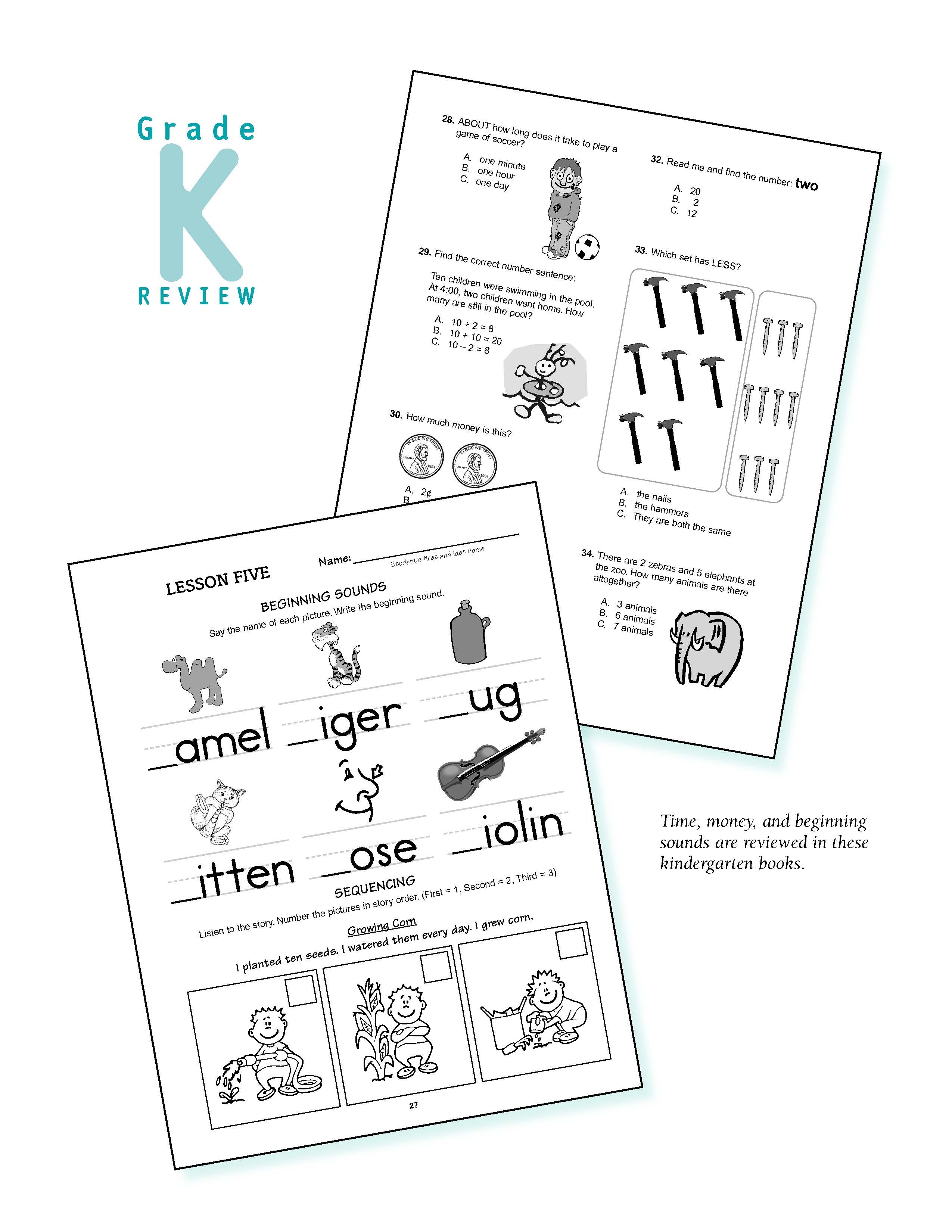 Click to see a larger version
Grade K Sample Pages
Skip to end of gallery
Skip to start of gallery
Click to see a larger version
Grade K Sample Pages
Skip to end of gallery
Skip to start of gallery
-
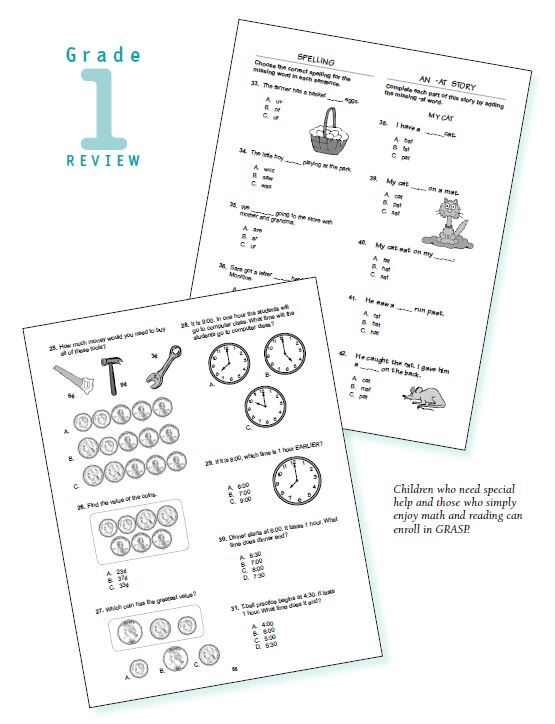 Click to see a larger version
Grade 1 Sample Pages
Skip to end of gallery
Skip to start of gallery
Click to see a larger version
Grade 1 Sample Pages
Skip to end of gallery
Skip to start of gallery
-
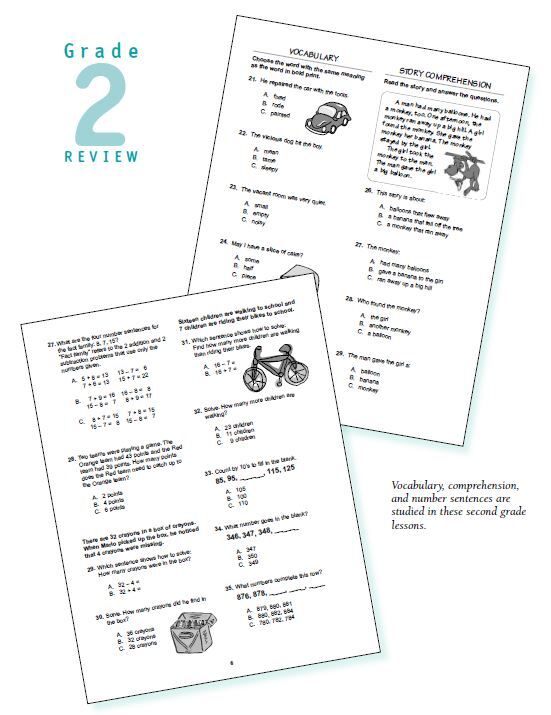 Click to see a larger version
Grade 2 Sample Pages
Skip to end of gallery
Skip to start of gallery
Click to see a larger version
Grade 2 Sample Pages
Skip to end of gallery
Skip to start of gallery
-
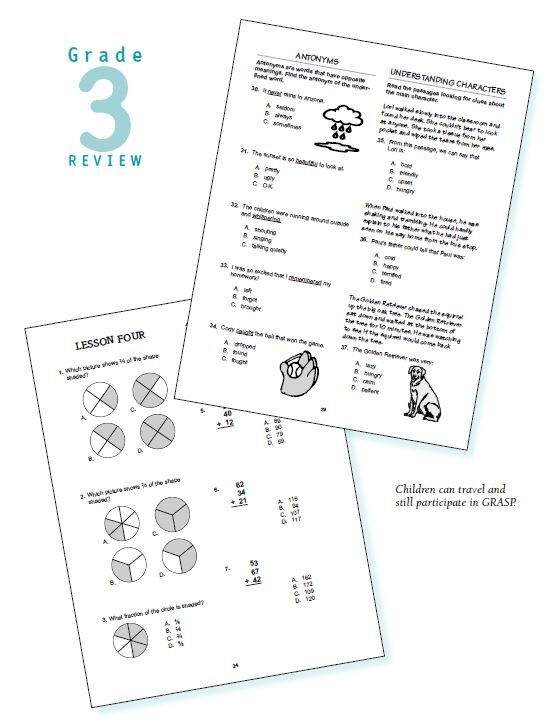 Click to see a larger version
Grade 3 Sample Pages
Skip to end of gallery
Skip to start of gallery
Click to see a larger version
Grade 3 Sample Pages
Skip to end of gallery
Skip to start of gallery
-
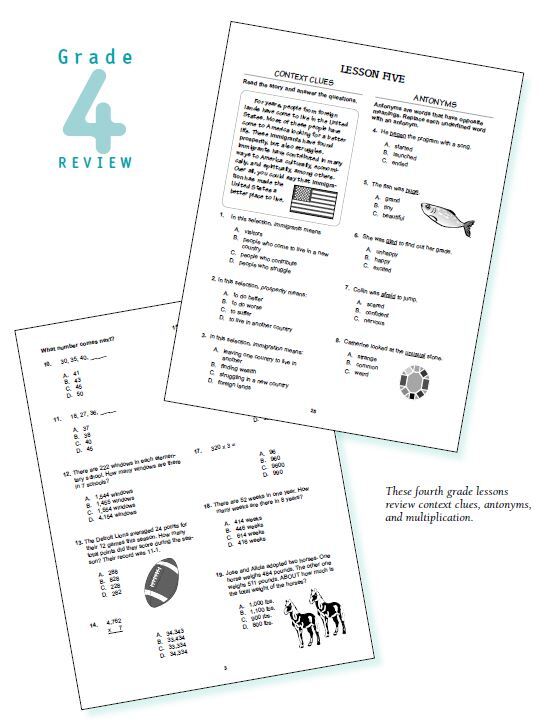 Click to see a larger version
Grade 4 Sample Pages
Skip to end of gallery
Skip to start of gallery
Click to see a larger version
Grade 4 Sample Pages
Skip to end of gallery
Skip to start of gallery
-
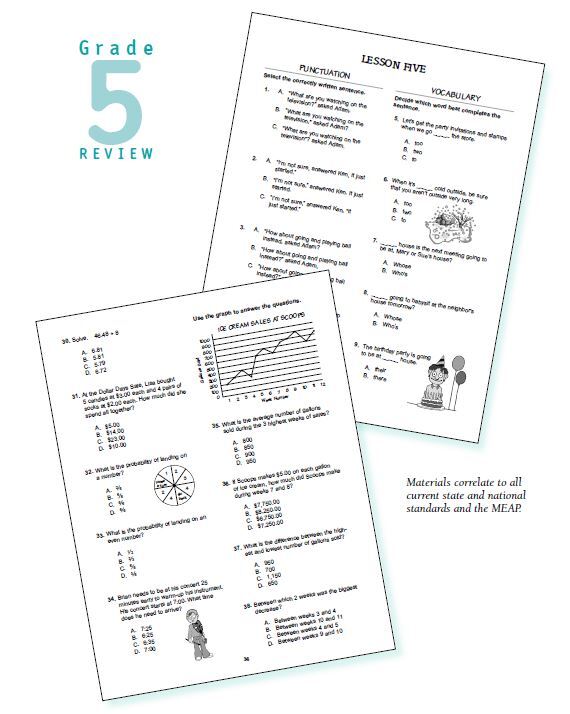 Click to see a larger version
Grade 5 Sample Pages
Skip to end of gallery
Skip to start of gallery
Click to see a larger version
Grade 5 Sample Pages
Skip to end of gallery
Skip to start of gallery
-
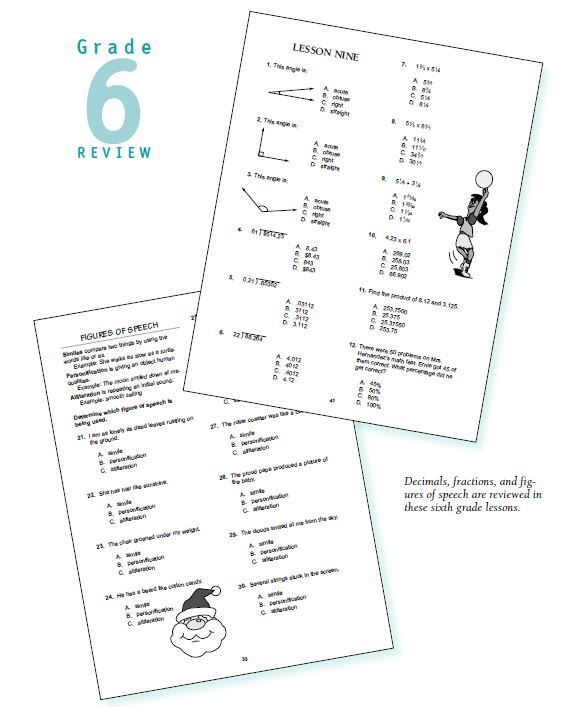 Click to see a larger version
Grade 6 Sample Pages
Skip to end of gallery
Skip to start of gallery
Click to see a larger version
Grade 6 Sample Pages
Skip to end of gallery
Skip to start of gallery
-
 Click to see a larger version
Grade 7 Sample Pages
Skip to end of gallery
Skip to start of gallery
Click to see a larger version
Grade 7 Sample Pages
Skip to end of gallery
Skip to start of gallery
-
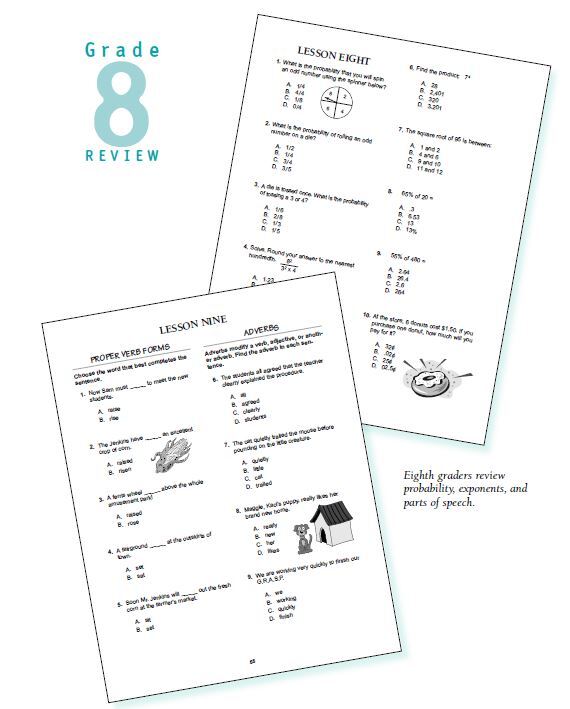 Click to see a larger version
Grade 8 Sample Pages
Skip to end of gallery
Skip to start of gallery
Click to see a larger version
Grade 8 Sample Pages
Skip to end of gallery
Skip to start of gallery
Program Benefits & Reviews
Increase Test Scores
"Can’t wait for the Summer program; I firmly believe that Taylor’s testing scores have remained consistent because of the bridge that GRASP provides between grades and I am so grateful that it is available to us!"
- Marti
Great Activity for Summer Months
"This brings back happy memories of when our daughter Jennifer participated in GRASP 30 years ago. A great activity for the summer months. Now she's a mom and MD passing on the tradition."
- Grandpa Duke
Expanding Skills
"I am very happy with this program. I plan on using it again next summer. My son has not only retained his skills but has expanded them."
- Susan, parent
Parent & Child Engagement
"GRASP helps a parent to get to know more about their child and see how they think."
- Sue, parent
Retain Study Habits
"We are so thankful you offer this program to help our children stay in the study habit."
- Ken & Marilyn, parents and teachers
Sound Program that Builds Confidence
"You have a very sound program and I am personally and professionally pleased with the outcome it has produced in my daughter. She is becoming more confident with her mathematical skills and looks forward to the new experiences your program offers."
- Stanley, father and associate professor
Scholar Enthusiasm
"Sara has really enjoyed working on the GRASP program this summer. Her enthusiasm remained throughout, and she eagerly looked forward to the return mail and your cute comments."
- Mary, parent
Frequently Asked Questions
What is the program format?
Each course in math and reading consists of a packet of nine weekly lessons, envelopes addressed to the scoring center, and pencil. Each lesson is constructed to reinforce typical basic skills generally found in most curricula at that particular grade.
What should my child expect?
A scholar is enrolled in reading and/or math by assignment to the level that was completed during the school year. Special needs scholars and gifted scholars can compensate by simply enrolling at the level appropriate for them. Completed answer sheets are sent to a scoring center where trained personnel process the responses and return the corrected copy. The lessons can be scheduled around family vacations or camp.
How do scholars benefit?
Our program is uniquely designed to provide encouragement and reinforcement to scholars over the summer by: providing feedback on a weekly basis, providing help on problem areas and awarding successful work. Using the GRASP materials helps scholars recall information learned during the school year over the summer. The scholar is ready to start the next school year without losing important skills and thought processes.
Does my school benefit from this program?
Yes. We keep track of each scholar's progress and completion. We mail each participating district a report on the scholars that they enrolled. Offering this program shows parents how important education is to your staff.
Register for GRASP
Register Online
If your school or district does not participate by enrolling scholars in GRASP, register online by clicking the button below. The cost for independent enrollment is $38 for one subject or $68 for both math and reading. If ordering the mail-in packets, we will send them materials to your home. If ordering online GRASP we will email you when the payment is processed and the account is activated.
Register by Mail or Fax
You may also download our GRASP Enrollment Form PDF to print, complete, and return by mail or fax. If you need assistance accessing this PDF form, please contact our Director of GRASP at GRASP@grps.org.
Mail: Please deliver form to 2405 Leonard NE, Grand Rapids, MI 49505.
Fax: Please fax form to 616-819-2545.

Contact Us
Call to find out how you can help bring GRASP to your students!
Christine Sanborn
GRASP Program Coordinator
Phone: 616-819-2548
Email: GRASP@grps.org





